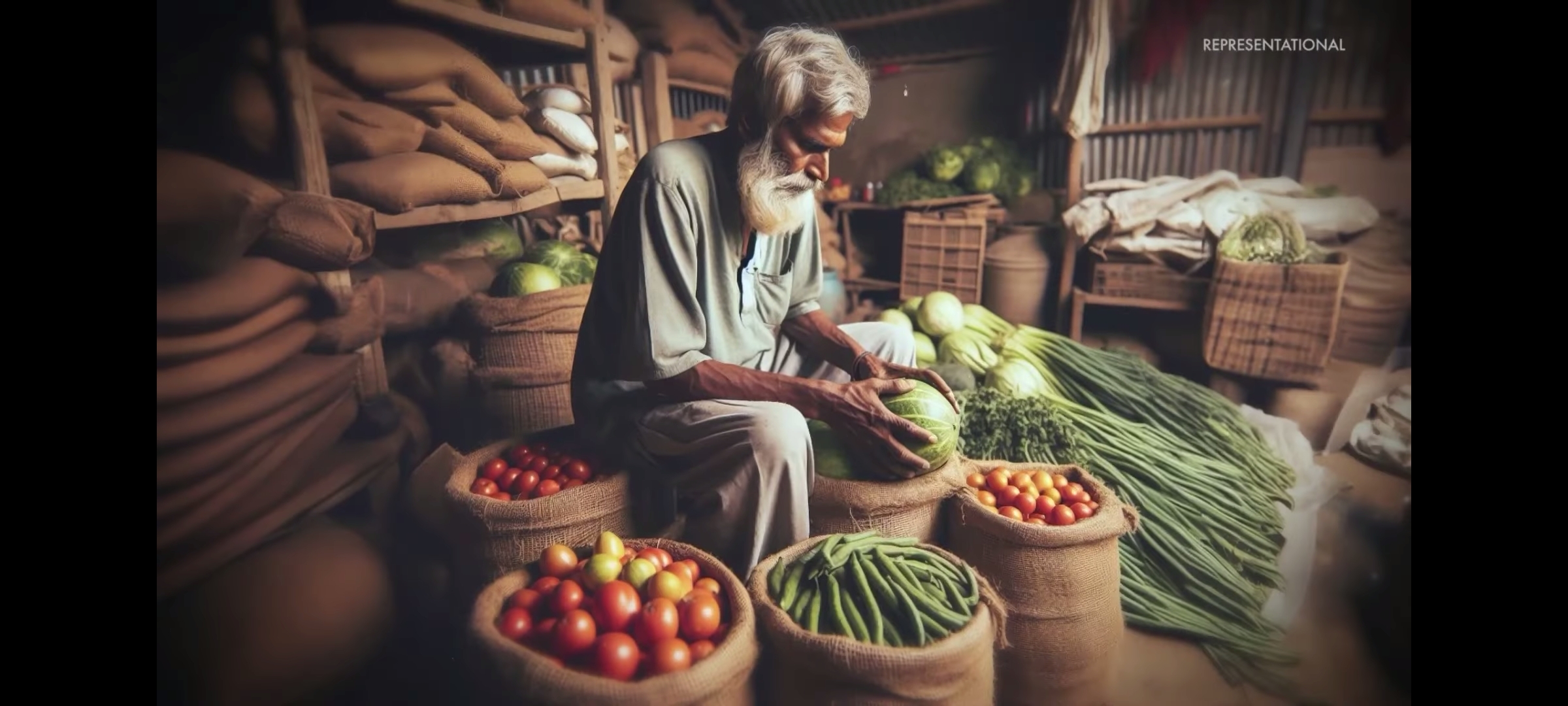Exploring a Revolutionary Outlook on Farming Costs ( खेती की लागत पर एक क्रांतिकारी दृष्टिकोण की खोज )

In the world of agriculture, a profound shift is underway concerning how we perceive and manage farming costs. This emerging perspective, often dubbed the “(New Perspective on Farming Costs”), goes beyond traditional financial assessments, considering broader environmental and social implications. In this essay, we delve into this transformative concept and its potential implications for the agricultural landscape.
Traditional farming costs predominantly revolve around input expenses such as seeds, fertilizers, machinery, labour, and land. These costs are meticulously calculated to determine the profitability of agricultural ventures. Farmers constantly strive to optimize these expenses to maximize their returns. However, this narrow focus on financial gains often overlooks the broader impacts of farming practices on the environment and society.
Environmental Costs of Conventional Farming
Conventional farming methods, characterized by heavy use of agrochemicals and monoculture, impose significant environmental costs. Pesticide and fertilizer runoff pollute water bodies, leading to ecosystem degradation and biodiversity loss. Soil erosion and degradation further exacerbate environmental concerns, affecting long-term agricultural productivity. The carbon footprint of conventional agriculture, attributed to machinery usage and chemical inputs, contributes to climate change. These hidden environmental costs are often sidelined in conventional cost-benefit analyses but hold immense significance in the sustainability discourse.
Social Implications of Farming Practices
Beyond financial and environmental considerations, farming practices have profound social implications. Industrialized agriculture, with its emphasis on large-scale monoculture and mechanization, often leads to the displacement of small-scale farmers and rural communities. Moreover, the intensive use of pesticides and herbicides poses health risks to farmworkers and nearby residents. The social fabric of rural areas is thus altered, with implications for community cohesion and well-being. Recognizing these social costs is imperative for promoting equitable and sustainable agricultural systems.
A Holistic Approach to Farming Costs
Amidst growing concerns over
environmental degradation and social inequities, there is a burgeoning interest in adopting a holistic approach to farming costs. This approach transcends conventional financial metrics, integrating environmental stewardship, social responsibility, and long-term sustainability into cost assessments. By accounting for externalities such as carbon emissions, water pollution, and community well-being, farmers can make more informed decisions that align with broader societal goals.
Incorporating Environmental Externalities
One way to integrate environmental considerations into farming costs is through the concept of ecosystem services. By valuing the benefits provided by natural ecosystems, such as pollination, soil fertility, and water purification, farmers can internalize the environmental externalities of their operations. Practices such as agroforestry, crop rotation, and organic farming not only reduce negative environmental impacts but also enhance ecosystem resilience and productivity.
Fostering Social Responsibility
Promoting social responsibility within the agricultural sector entails prioritizing the welfare of farmers, farmworkers, and rural communities. Fair trade practices, cooperative farming models, and investment in rural infrastructure are avenues through which social costs can be mitigated. Additionally, empowering small-scale farmers through access to resources, knowledge, and markets can foster inclusive growth and poverty alleviation in rural areas.
The Economic Viability of Sustainable Farming
Contrary to conventional wisdom, sustainable farming practices need not come at the expense of economic viability. Research indicates that agroecological approaches, which emphasize biodiversity, soil health, and ecological balance, can yield comparable or even higher profits than conventional agriculture in the long run. Moreover, sustainable farming reduces reliance on costly external inputs, thereby enhancing resilience to market fluctuations and resource scarcity.
Investing in Agricultural Innovation
Investments in agricultural innovation and research are crucial for transitioning towards more sustainable farming systems. Technologies such as precision agriculture, biological pest control, and conservation agriculture offer promising avenues for reducing input costs while minimizing environmental impacts. Furthermore, policy support and financial incentives can incentivize farmers to adopt sustainable practices and overcome initial barriers to change.
Traditional View vs. New Outlook
Conventionally, farming costs have been primarily viewed through the lens of financial expenditure. Farmers meticulously calculate expenses related to seeds, fertilizers, equipment, and labour to determine profitability. However, the “(New Perspective on Farming Costs”) challenges this narrow focus, urging stakeholders to consider a more comprehensive set of factors influencing agricultural sustainability and resilience.
Environmental Considerations
One of the key tenets of the “(New Perspective on Farming Costs”) is the recognition of environmental costs associated with conventional farming practices. Industrial agriculture often relies heavily on chemical inputs and monoculture, leading to soil degradation, water pollution, and biodiversity loss. By incorporating these environmental externalities into cost assessments, farmers can make more informed decisions that promote long-term ecological health.
Social Dimensions
Beyond financial and environmental factors, the “(New Perspective on Farming Costs”) also emphasizes the social dimensions of agriculture. Conventional farming practices can have detrimental effects on rural communities, including displacement of small-scale farmers and health hazards for farm workers. Addressing these social costs requires a holistic approach that prioritizes community well-being and equitable access to resources.
Evaluating Sustainability
Sustainability lies at the heart of the “(New Perspective on Farming Costs”). Instead of solely focusing on short-term profits, this approach advocates for practices that maintain ecological balance, support local economies, and preserve cultural heritage. By adopting sustainable farming methods, farmers can mitigate risks associated with climate change, soil degradation, and market volatility, ensuring the long-term viability of agricultural systems.
Economic Viability
Contrary to popular belief, sustainable farming practices can be economically viable in the long run. While initial investments may be higher, the reduced reliance on expensive inputs and the potential for premium prices for sustainably produced goods can offset these costs. Additionally, sustainable farming practices often result in improved soil health, increased biodiversity, and lower operational risks, contributing to overall profitability.
Resilience to External Shocks
The “(New Perspective on Farming Costs”) also underscores the importance of building resilience within agricultural systems. By diversifying crops, implementing agroecological techniques, and investing in infrastructure, farmers can better withstand external shocks such as extreme weather events, market fluctuations, and policy changes. This resilience not only ensures the stability of individual farm operations but also contributes to food security at regional and global levels.
Implementing Change
Transitioning to a more holistic approach to farming costs requires concerted efforts from all stakeholders involved in the agricultural supply chain. Policymakers can incentivize sustainable practices through subsidies, regulations, and market mechanisms that internalize environmental and social costs. Consumers, too, play a crucial role by demanding ethically produced food and supporting local farmers who prioritize sustainability
Education and Outreach
Furthermore, education and outreach initiatives are essential for fostering awareness and understanding of the “(New Perspective on Farming Costs”) among farmers, consumers, and policymakers. By providing access to information, training programs, and demonstration farms, agricultural extension services can empower stakeholders to make informed decisions that align with sustainable principles.
Conclusion
In conclusion, the traditional paradigm of farming costs is undergoing a transformative shift towards a more holistic perspective that encompasses environmental, social, and economic considerations. By accounting for the true costs of conventional agriculture and embracing sustainable farming practices, we can build a more resilient, equitable, and environmentally sound food system. As we navigate the complexities of modern agriculture, it is imperative to prioritize the long-term health of our planet and communities over short-term financial gains. Embracing this new perspective on farming costs is not just a choice but a necessity for the future of agriculture.
The “(New Perspective on Farming Costs”) offers a holistic framework for evaluating the true costs and benefits of agricultural practices. By expanding our view beyond financial metrics to encompass environmental stewardship, social responsibility, and long-term sustainability, we can create a more resilient and equitable food system. Embracing this new outlook requires collaboration, innovation, and a shared commitment to building a future where agriculture thrives in harmony with nature and society.
